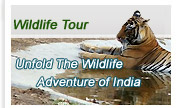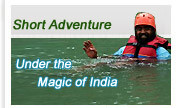| Home | Contact Us | Reservation |
  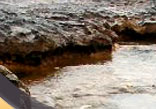 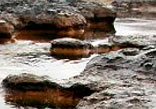 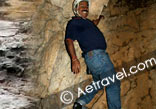 |
| Cavers have been Active on Indian Soil for the Past Several Years |
| Choose Your Adventure | ||
| Caving Tours In India Luxury Adventure Tours Skiing in India Scuba Diving India India Trekking Tours Trekking in Himachal India Cycling Tours Trekking in Ladakh Trekking in Kumaon Trekking in Garhwal India Motorbike Safari India Wildlife Safari India Fishing Tours India Jeep Safaris India Family Adventures India Student Adventures India Birding Tours India Reptile Tours India Tribal Tours India Camel Safari India Horse Back Safari India Elephant Safari India River Rafting Adventure Photo Gallery India Short Adventure Kailash Mansarovar Yatra Ganges Sailing Trip |
||
Family Adventures |
||
|
||
Explore Cycling Tours |
||
|
||
 |
||
 |
Adventure & Expedition Travel - » Caving Tours In India

Though international cavers have been active on Indian soil for the past several years, caving as such is a relatively new adventure activity that is attracting greater number of tourists to India’s North Eastern state, specifically Meghalaya.
Every year, expert cavers from all over the world explore the hills of Meghalaya, to find new caves and map them. Some very large caves with beautiful formations are well mapped and are easily accessible. Caves are located in almost all the districts of the state. Meghalaya probably has more caving potential than any other state in the country. These caves, with mainly stalactite and stalagmite formations, are truly nature’s gift and wonder. The deepest and longest of the caves in South Asia are located in Meghalaya.
 To give you a very brief idea on what caves are all about, Meghalaya has huge deposits of limestone and abundant rainfall (six to eight months in a year), which is the main season for the Karst cave formations. Water dissolves the soluble parts trapped in the limestone and with time the caves get bigger and deeper. The forming of Karst caves is very complicated and it is still a topic of geological research. But some basic aspects are very simple: water containing carbon dioxide is able to dissolve limestone, entering through cracks and, over time, widening it. It may take 100-150 years to form an inch of material to the speleothems. These speleothems may take the form of icicles, trees, statues, or the delicate design of lacy flowers.
To give you a very brief idea on what caves are all about, Meghalaya has huge deposits of limestone and abundant rainfall (six to eight months in a year), which is the main season for the Karst cave formations. Water dissolves the soluble parts trapped in the limestone and with time the caves get bigger and deeper. The forming of Karst caves is very complicated and it is still a topic of geological research. But some basic aspects are very simple: water containing carbon dioxide is able to dissolve limestone, entering through cracks and, over time, widening it. It may take 100-150 years to form an inch of material to the speleothems. These speleothems may take the form of icicles, trees, statues, or the delicate design of lacy flowers.Caving is a mixture of a lot of activities. It involves a bit of free hand rock climbing, plenty of crawling, going through tight squeezes, walking and, if one is lucky, some swimming. Of course, there are the more technical caves, but they are not for amateur cavers. Exploration of the more difficult ones would need hundreds of hours of experience and a lot of rope work knowledge, which only experts might possess.
For novices, excitement sets in from the word go. Once inside, some people tend to lose their way even when being led by guides. But that is part of the adventure element that goes with caving. When lost, do not panic. (See Survival Tips).
 It is important not to feel claustrophobic when crawling through narrow crevices. Though dark and mysterious, strangely some of the caves in Meghalaya have large halls, huge pools of crystal clear waters and formations that are absolutely indescribable. One needs to delve deep to actually see the beauty that lies hidden inside the caves.
It is important not to feel claustrophobic when crawling through narrow crevices. Though dark and mysterious, strangely some of the caves in Meghalaya have large halls, huge pools of crystal clear waters and formations that are absolutely indescribable. One needs to delve deep to actually see the beauty that lies hidden inside the caves.A significant feature of the caves in Meghalaya is that it supports an active life. Deprived of the sun’s rays, the creatures inhabiting the caves have evolved in time to adapt to the surroundings. A fine example would be of the cavefish, which has no eyes.
In the caves exist spiders with fist-sized bodies and legs, which when spread out would match a dinner plates circumference. Then there are centipedes, millipedes, crabs, prawns and even albino fish. This variety of “blind” fish found only in a few caves in the state has even developed “special antennae” to navigate through some of the river systems existing inside the caves. The longest river system stretches to nearly 800 metres.
Some caves like the Krem Lymbit in Ri Bhoi district are known for various species of bats. Ri Bhoi district headquarters Nongpoh is approxiamtely 35 km from Shillong and about 42 km from Guwahati. Tetengkhol-Balwakol caves and the Siju in Garo Hills are home to the most endangered bat species. The longest cave, named Krem Kotsati, under Jaintia Hills district, measures more than 21.5 km.
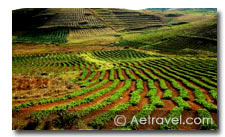 Krem Kotsati has some “virgin river passages” Caving in Meghalaya is best done in the winter months - December to March, to be precise -- when water levels are at their lowest inside the caves. As most of the caves are located in the southern part of the state, it is best to camp somewhere close to the entrance. Caving gears range from colored jumpsuits, fibre helmets fitted with carbide lamps and all other essential gear that are needed for a full-length cave exploration are a must before one ventures deep inside.
Krem Kotsati has some “virgin river passages” Caving in Meghalaya is best done in the winter months - December to March, to be precise -- when water levels are at their lowest inside the caves. As most of the caves are located in the southern part of the state, it is best to camp somewhere close to the entrance. Caving gears range from colored jumpsuits, fibre helmets fitted with carbide lamps and all other essential gear that are needed for a full-length cave exploration are a must before one ventures deep inside.Box Items
The deepest cave in the subcontinent is in Meghalaya
The longest cave in the subcontinent is in Meghalaya.
Meghalaya is in the Top 10 caving destinations of the world.
Top three longest caves of Meghalaya Krem Kotsati 21,530m, Synrang Pamiang 14,157m and Umthloo (Tongseng) 13,413m
Source: South Asia Cave Registry, H.D. Gebauer, Germany.
Caving Tips
When exploring caves on your own, take the following precautions
Never go alone.
Take three sources of light.
Wear a helmet with a chin strap that will release underload.
Use boots with rubber soles.
Dress warmly, with cotton clothing.
Take some energy food along.
Take a 20' piece of 1" nylon tubular webbing and a carabiner.
Tell someone where you are going and your estimated time of return.
Caving Manners
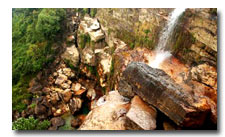 Keep to established routes, both undergound or on the surface.
Keep to established routes, both undergound or on the surface.Do not litter or deface any cave.
Do not disturb the wildlife; salamanders, crickets, spiders or other forms of life.
Do not touches or damage cave formations that may have taken thousands of years to form.
Emergency Checklist
So you’re on a caving trip and you or a member of your party becomes injured. In the first few minutes after this happens you must do several things to ensure the safety of the injured person and the rest of the group? The following is a checklist that every caver should keep in mind.
Protect yourself first -- then worry about your patient. Don’t become a victim yourself.
Ensure that you can obtain access to the injured person safely. Check for unsafe conditions before entering an accident site and correct all dangerous conditions.
Determine the extent of injuries and stabilise the patient if you have the skills necessary. Treat for hypothermia prevention. Determine if the person can walk/crawl out, can be assisted to walk/crawl out, or if you will need assistance to get the person out. If there is any chance of spinal injury do not move the patient except to prevent further injury.
If the injury is serious, use your best judgment. Begin to take notes about your patient. Pulse, respiration, and skin temperature are minimum, clearly time and date all data.
If you need outside help, send for it or wait for your backup person to notify authorities. Remember that your backup person can only call for backup if they know exactly which cave you are in and when to expect your return from that cave.
Inventory all equipment in your group to determine what is available; to help your patient survive, to aid your survival, and determine what may be needed from the outside. Get the information to the surface.
When possible two people should be sent out for help, they should leave as much food and water and dry clothing as possible for the people that remain with the patient. They should carry a copy of all notes concerning patient condition and location. Include information about your needs as well as what you have on site to treat the patient with. Your messengers need to know emergency telephone numbers and have knowledge and experience to get out safely.
Copyright
©AeTravel.com All Right Reserved (Copying
of Text & Picture from this site is Strictly Prohibited).
Site Developed & Maintained by Ushainformatique.com & ElectronWeb.com |



